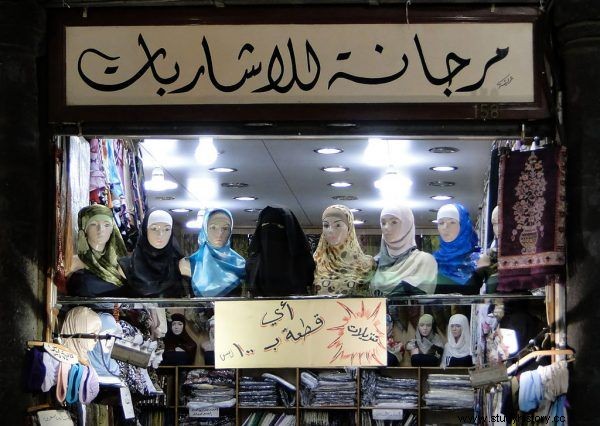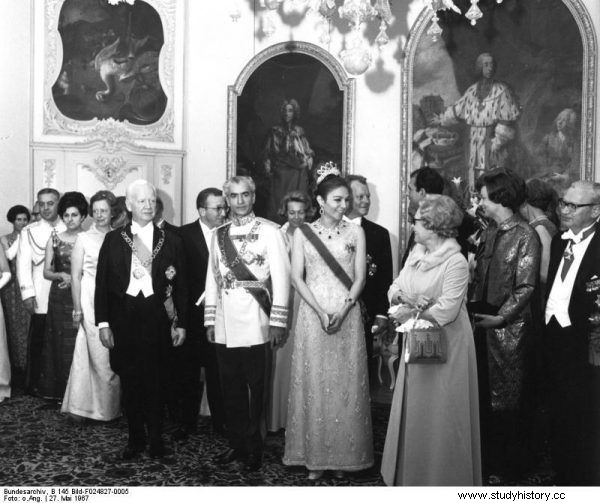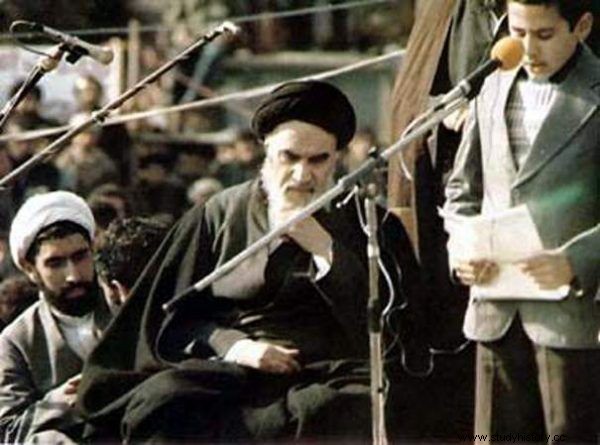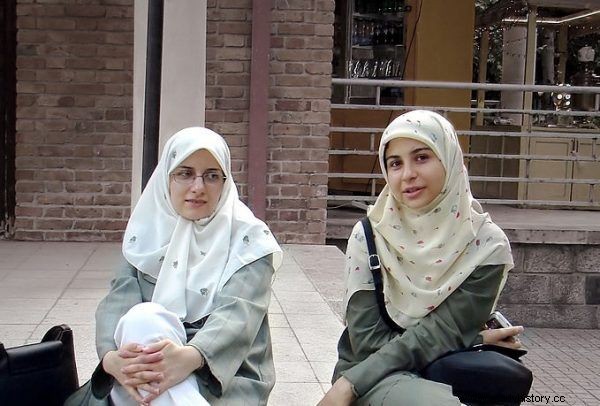They can be stoned for adultery. If they are raped, they are punished equally with the attacker. Until recently, they did not have equal divorce rights and custody of their children. They needed her husband's permission to leave the country. Women in Iran have to fight for basic rights ... which they lost quite recently!
Both Amnesty International and the official United Nations organs have warned that the state of human rights in Iran still leaves much to be desired. Among the issues mentioned as the most problematic are those related to the treatment of women.
A law that hates women?
Despite repeated admonitions from international organizations, Iran maintains a law, especially family and criminal law, that discriminates against women. Nay! It is planned - in the spirit of "pro-family policy" - to further limit women's access to contraceptives, as well as a ban on voluntary sterilization. Measures to counter domestic violence against women are still insufficient, and stoning is one of the methods of execution provided for by Iran's Islamic criminal law .
Women continue to depend on male family members - first fathers, then husbands and sons. They formally decide about their fate. Their authority ranges from serious matters, such as marriage, to relatively trivial matters, such as ... permission to leave the country. Whether she [the woman] is 10 or 40, she will not receive such permission from the authorities without the written consent of her guardian, father, husband, brother or son - writes the researcher Maria Składankowa about the situation of women.

In Europe and America, the subject of compulsory headgear is very controversial. Among the Iranian women themselves, opinions about the chador - traditional Iranian dress - are divided. Some perceive it as an unnecessary limitation, others - see it as a valuable element of tradition (photo by Bernard Gagnon, license CC BY-SA 3.0).
Temporary marriage is also allowed in Iran, i.e. sigha . What is it about? This specifically Iranian custom is explained by Dr. Kooshyar Karimi, author of the book "The Secret of Leila" on women's rights in Iran:
Sharia law sigha means that a man can sleep with a woman for a certain period of time, from a few hours to many years, depending on the agreement they both have made, he only has to pay the sum, also fixed in advance. This is a kind of legally sanctioned prostitution . Women rarely consent to it of their own free will.
It used to be… better
Meanwhile, a few decades ago, the situation of women in Iran looked more promising. Under Mohammad Reza Pahlavi, who ruled from 1941 to 1979, many significant reforms were carried out. The greatest success of the Shah's emancipation policy was the introduction of the new Law on the Protection of the Family in 1967.
The document (supplemented in 1975) limited polygamy. He also forbade temporary marriages. He raised the age of entering a formal relationship to 18 for women and 20 for men. The women also obtained the divorce initiative and the opportunity to look after their children after their father's death, and even - which was unacceptable until now - after the divorce. Already from 1963 they also enjoyed electoral rights . For comparison:this is eight years earlier than Swiss citizens gained the right to vote!
Under Pahlavi, women continued to be discriminated against in traditionally patriarchal Iranian society. However, government circles, as well as the Shah's third wife, Queen Farah, promoted the image of a more modern woman. Society was changing. For example, the percentage of Iranian women in education and in the labor market was slowly increasing. At the end of the 1970s, women made up 30% of students.
Revolution not for women
The process of reform was halted in 1979. The protests that had been mounting for several years led to a revolution led by Ayatollah Ruhollah Musawi Khomeini, a Shi'ite spiritual and political leader. The coup in February 1979 brought about radical changes in women's rights as well.

Under the rule of Shah Mohammed Reza Pahlavi (center pictured), the situation of Iranian women improved significantly. The model for a modern Iranian woman was to be his third wife, Queen Farah (photo Bundesarchiv, license CC BY-SA 3.0 de).
Just a month after returning to the country, Khomeini dismissed all women judges and made it compulsory to wear the hijab, i.e. a traditional headdress covering the hair. The legal age for marriage for women - girls in fact - has been lowered to 13.
It was just the beginning of the changes. As early as July 1979, women were publicly flogged for violating moral norms and not respecting the rules of dress . The death penalty for prostitution and "moral degradation" was soon reintroduced. As Haleh Afshar, who studies the situation of women in Iran, notes, this custom was not practiced in Iran since at least the beginning of the twentieth century.
This article has more than one page. Please select another one below to continue reading.Attention! You are not on the first page of the article. If you want to read from the beginning click here.
After the revolution, the traditional method of execution, which is stoning, was also restored. It threatens women caught in adultery and "staining the honor of the family." A shocking description of this practice is provided by Karimi in The Secret of Leila. He considers the dangers of his mother who, in order to obtain money for her son's education, had sexual relations with her husband's supervisor:
[Mother] might have been showered with earth up to her shoulders in a portable container and then exposed to the public with her head covered in a scarf, while fifty revolutionary guards and maybe Basij militiamen would throw at with stones ( guards and militia fight for the honor of stoning ).
Stones are selected according to size - the size corresponds to a teenager's fist - and thrown until the doctor announces after the examination that the victim's heart has stopped beating. Then my mother's brain would leak out of my skull, teeth would be crushed, eyeballs would hang on my cheeks.

Many of Khomeini's supporters did not know his views before the revolution ... or did not take them seriously (source:public domain).
Why did Khomeini win?
Many factors contributed to the fall of the Pahlavi regime and the success of Khomeini. The Iranians were dissatisfied with the Shah's rule. Despite partial reforms, human rights continued to be violated on a large scale in the country. From the 1950s terror was spread by the Shah's special services, SAWAK, whose primary goal was to fight the opposition. Interestingly, Pahlawi was helped by British and American advisers ...
Western influence in Iran in general has been considerable. The Americans were controlling the check - admits Ryszard Kapuściński in the book "Szachinszach". It also aroused opposition from citizens. They criticized too violent, in their opinion, occidentalization and excessive dependence of the country on Western partners. Consumerism and other "novelties" were rejected. The United States has become a symbol of everything that is Western - and thus contrary to the Iranian tradition and demoralizing.
In the late 1970s, frustration at the economic crisis joined the resistance to the mindless introduction of alien patterns. Its effects were felt more and more clearly, especially by small traders. The buyers from the Tehran bazaar saw a threat to themselves in favoring big business and mass importing foreign goods.
From the outset, the conservative protest against the rule of the Shah quickly took on forms drawn from the Shi'ite tradition. Kapuściński, analyzing the Iranian revolution and referring to religion, is not surprising. He points out that for the ambitious, but mostly uneducated, "walkers" of the revolution, who had just moved to the cities and wanted to undermine the existing system, faith became a point of ideological support. Others followed. It is especially paradoxical that women also took part in the movement en masse. One of the expressions of belonging to the opposition was ... a return to traditional clothing. Chador, a distinctive Iranian costume, became popular in the streets of Tehran even before the revolution.
How is it possible that women voluntarily took part in a revolution that would soon drastically curtail their rights? Mehri Honarbin-Holliday, the author of a book about the struggle of Iranian women to improve their position, emphasizes that before returning to the country, Khomeini, an exile, promised not to impose religious laws on Iranians. The fact that few people read Khomeini's writings before the revolution, and even fewer took them seriously , the authors of the "History of Iran" point out. For many ayatollah supporters, the rapid and compulsory Islamization that followed the revolution was therefore a shock.
How much Islam is in the Islamic revolution?
Although the advent of the fundamentalist revolution was a complex and multilateral process, many authors still blame, above all, religion for the persistence of laws discriminating against women in Iran. According to Agata Nalborczyk, the image of backward, sexually tormenting Islam still dominates, especially in the Polish press. Such an attitude is, in her opinion, an unacceptable and harmful simplification.

In the first years of the 21st century, thanks to Sajjed Mohammad Chatami's liberal reforms, the situation of women gradually improved. However, there is still a lot of work to be done (photo by Hamed Saber, license CC BY 2.0).
It is true that Iranian law is related to religious law. One of the "achievements" of the revolution was the establishment of the spiritual headship over the secular authorities. However, some of the habits that arouse the greatest indignation are in fact a relic of the Persian, pre-Islamic times. This is the case with temporary marriages, which do not occur in other Islamic countries. A man's virtually unlimited right to defend his honor has a similar character. If his wife is raped, maybe he - even should! - to kill not only the attacker but also your disgraced "property". It would be in vain to look for such an injunction in the Qur'an.
In the case of legal provisions dating back over a thousand years, a lot also depends on the interpretation that is given to them. This, in turn, is the responsibility of the people in power. It is they who can make the regime extreme or as gentle as possible. In Iran, since the beginning of the 21st century, attempts have been made to gradually liberalize, initiated by the victory of Sajjed Mohammad Chatami in the presidential election in 1997. The situation of women, albeit slowly, is improving. Still, it has not even reached the pre-revolution level of 1979…
